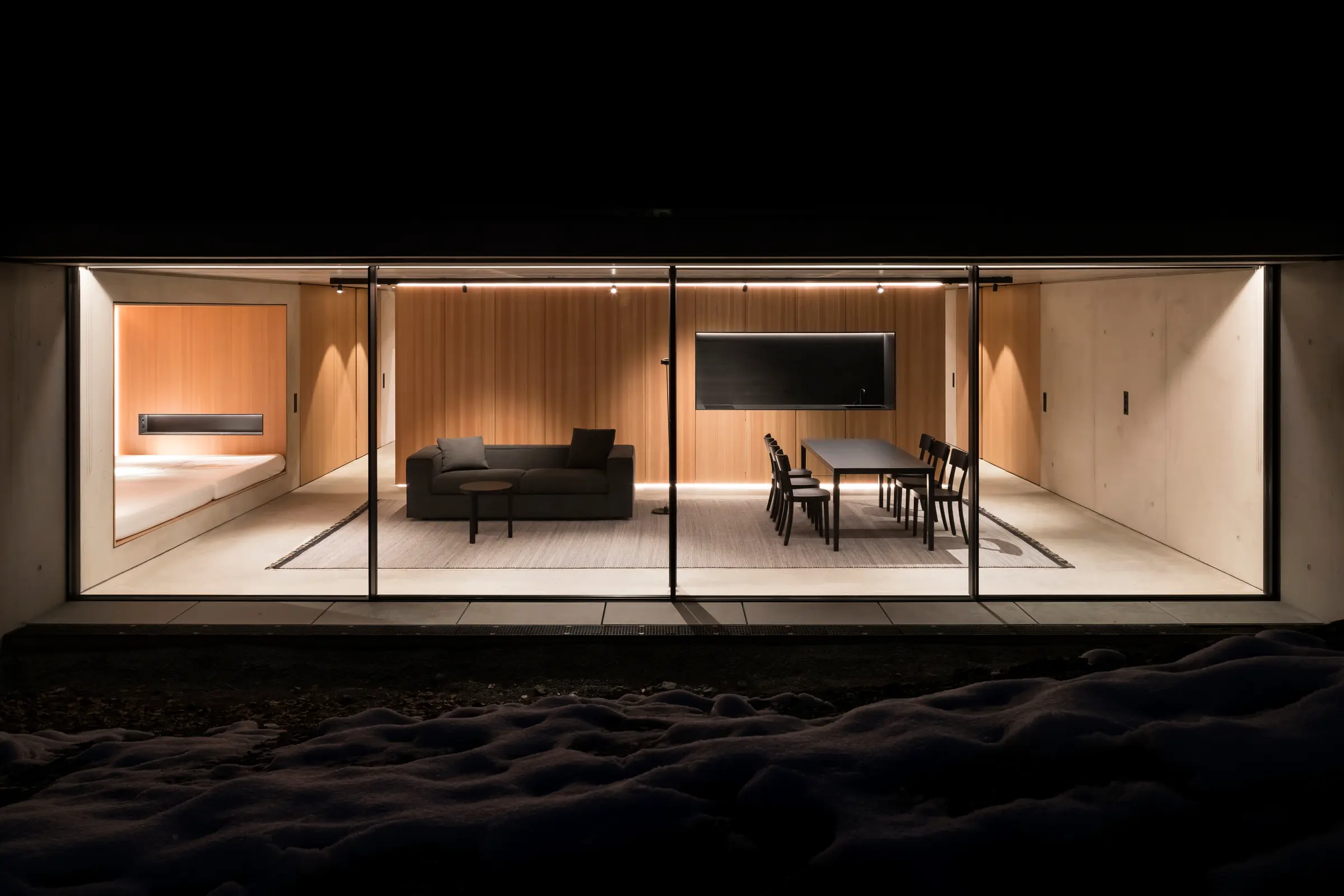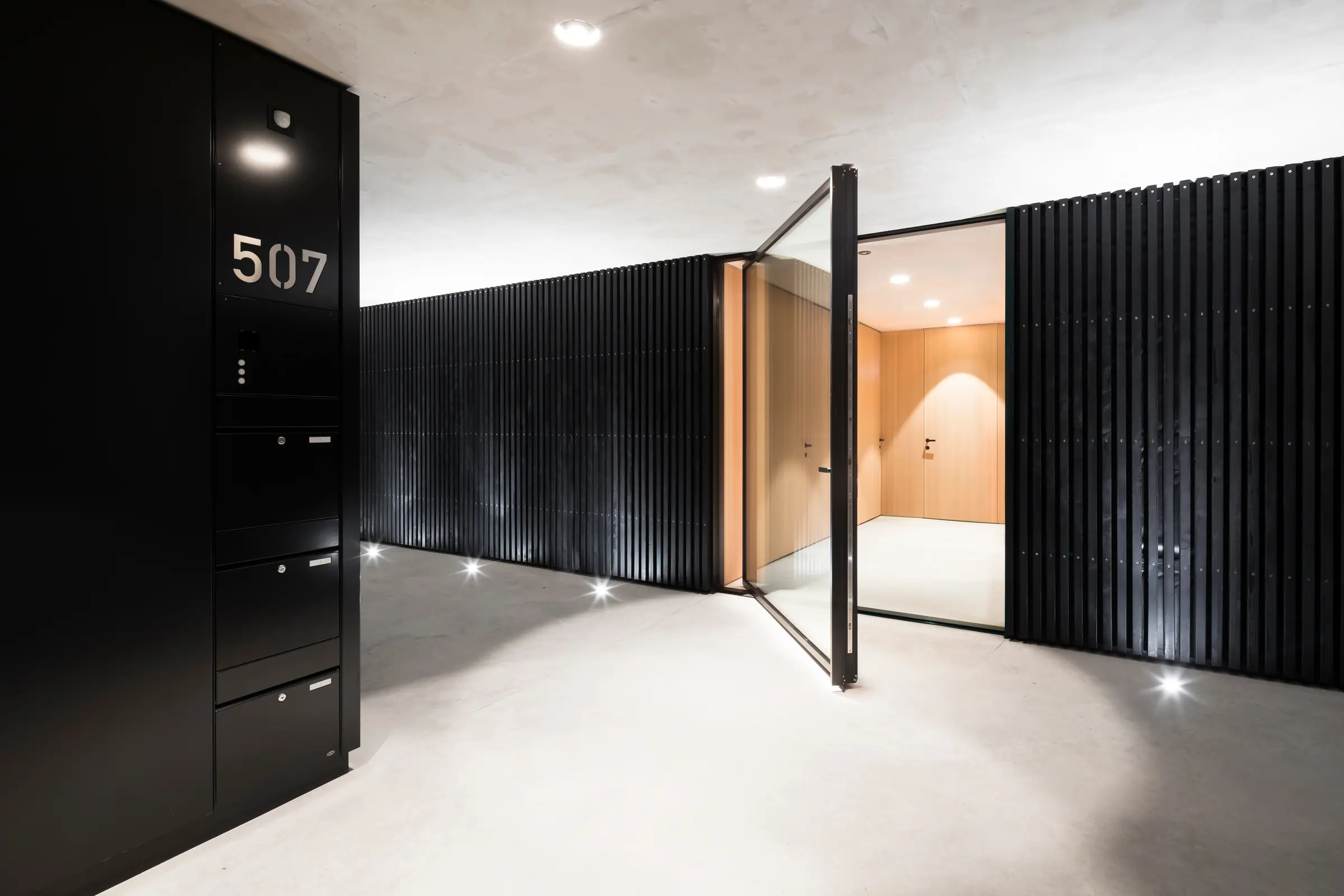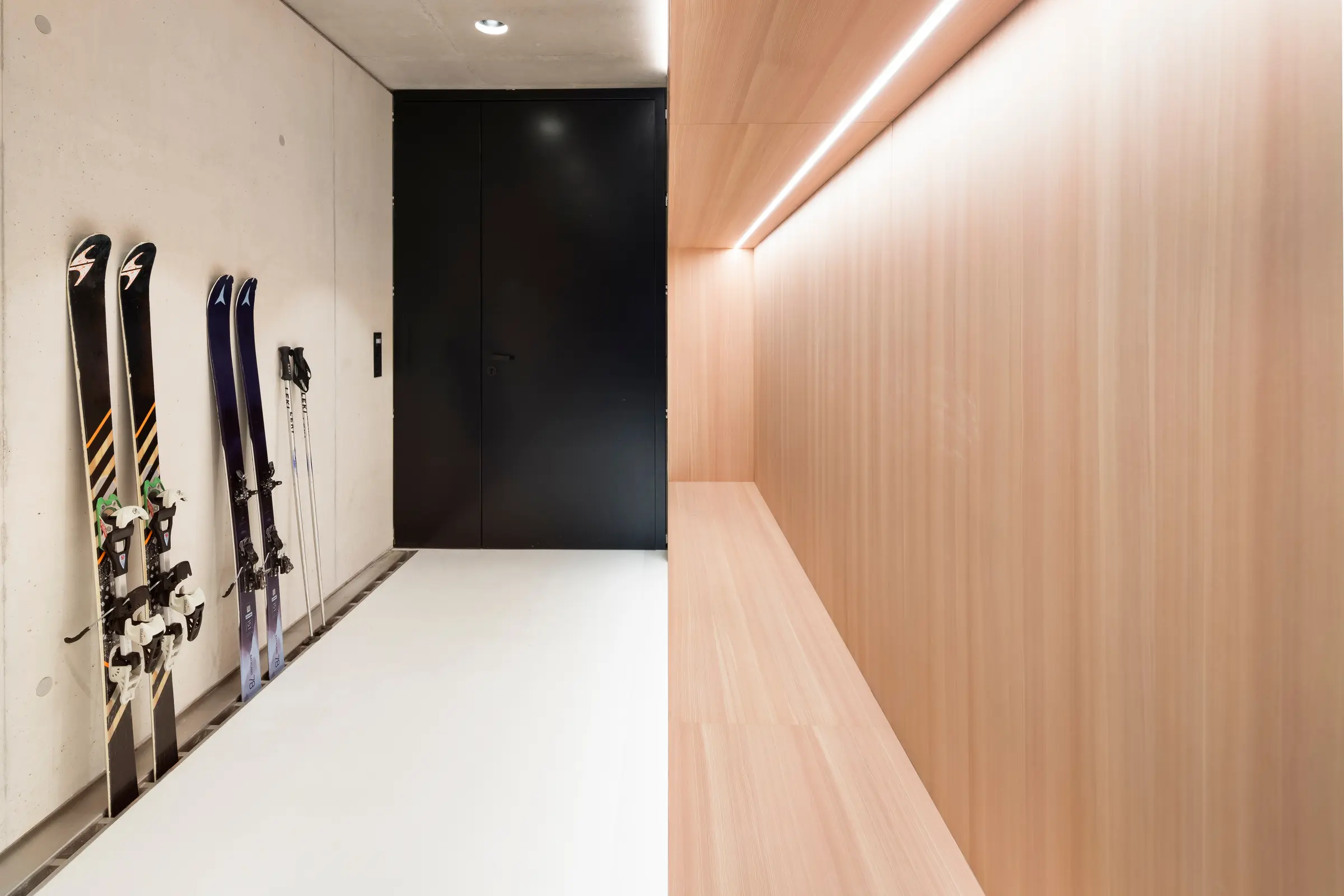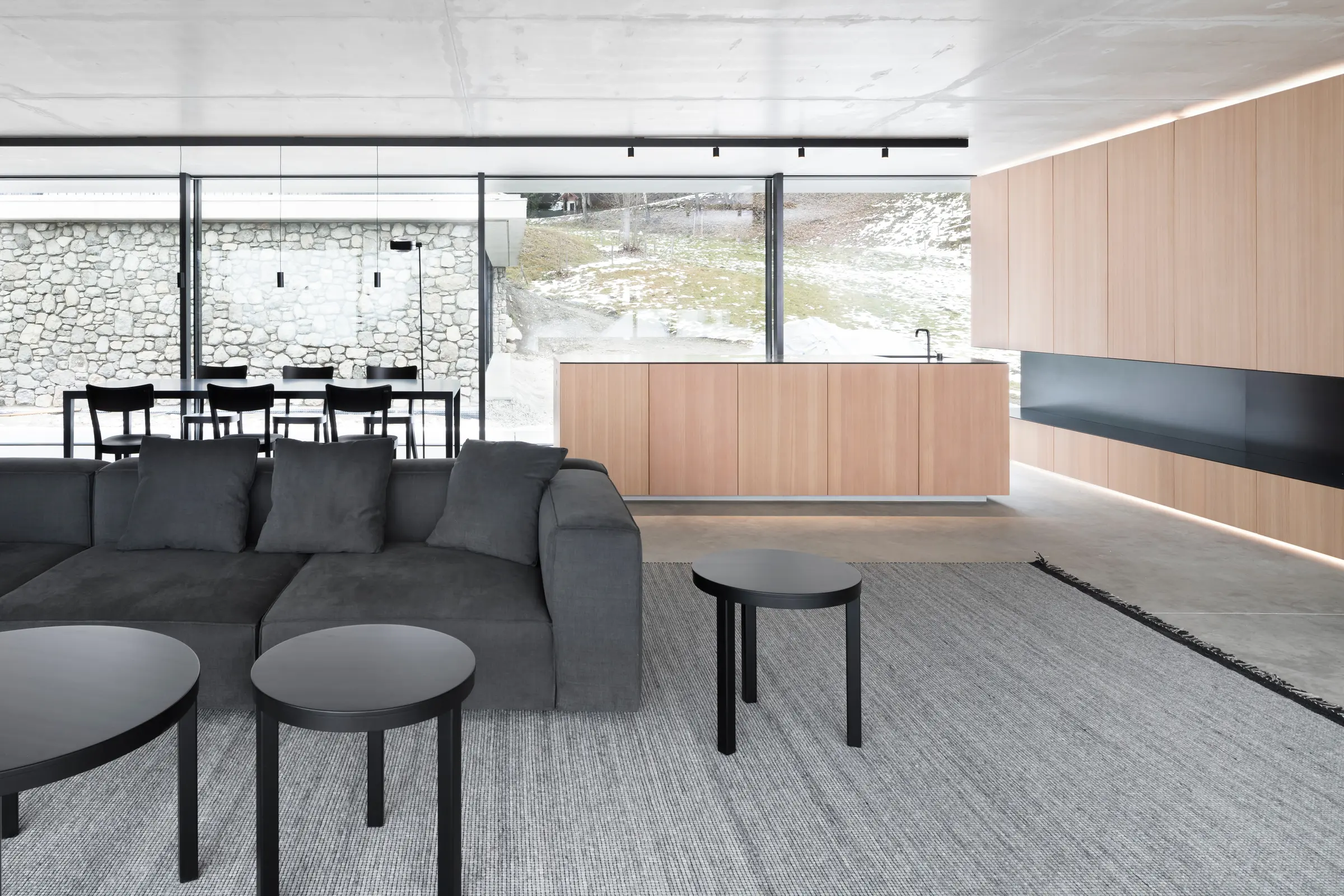June 2025
Reference
Tinderbox


The concept of the classic alpine ski lodge is more and more questioned in context with climate change. Alpine retreats nowadays extend their periods of use to the whole year and must also provide much more in terms of design and equipment than the former rural log buildings. Those who hike in ski resorts off-season - and increasingly also in winter due to the lack of snow - are often surprised by the out-of-place buildings that seem stripped of their function amidst the green sprouting nature. The modern mountain cabin, on the other hand, is multifunctional, combines sustainability with modern technology and, in the best-case scenario, also blends in perfectly with its surroundings. Two outstanding examples of this new alpine building typology have just been developed by architect Dominik Aichinger in his double role as client and planner in western Austria.

In the heart of the Alps, in Salzburg's greywacke zone, the newly built property nestles on a gently rising southern slope. The staggered arrangement of the two structures creates inward-facing zones of tranquillity and concentration, opening up to the front with a breathtaking view of the valley. The two purist huts blend slimly and sleekly with the landscape, counterpointing the surrounding alpine baroque chalets. Sky-Frame's translucent, frameless glass fronts alternate on the outer shell with delicate wooden slats that, like trunks or branches, mimic the light and shadow structures of its natural environment. In delicate honey tones that will soon silver in the sun, soothed black zones and the reflections of the sky in the seemingly endless window surfaces, the huts almost dissolve into the alpine landscape when viewed from a distance.

The interior design planned by designkollektiv follows the purist design principles of the outer shell. The deliberately lowered room height shifts the viewing level to sitting height and thus implements cosiness - a space for resting, cooking and eating together, reading, reflecting and looking into the landscape or the open fire. With its soft natural tonality, the room's atmosphere responds to the seasonal changes of the surrounding nature. Against the lush summer colour play of the outdoors, the subtle hue of the interior recedes, fades, calms and cools. In turn, in the pale shades of winter or the gloom of humid autumn days, the room radiates natural warmth and delicate colouring.

The surrounding’s raw, rough and wild nature manifests itself in the few pure materials in tamed form. Wood, metal and stone, all with geographical reference - sanded, brushed, hardened, broken or ground by the elements in the heterogeneous play of the seasons - set and refined, find their counterpart in the surfaces.

The statically effective elements are made of black burnished steel and their dimensions are reduced to a minimum. The isolated steel slabs over which the exposed concrete ceiling of the loft-like main room spans appear almost absurdly narrow. The central area is free of visual interruptions and extends over a length of 15 meters accompanied by frameless window bands. At the two ends of the room are the functionally used zones, which are veneered with lightly pigmented larch wood. Except for the monolithic kitchen block, all cooking tools are concealed there. On the opposite front, two pivot doors connect the main space with the mineral-coated master bath and the expansive closet space.

An iconic steel staircase connects the two living levels. In the area below is an independent apartment for the children of the house, as well as the entrance, which is visually determined by the powerful matte black staircase corpus. As closed geometrically the object appears in the side view - in the front the staircase dissolves into razor-thin lines and touches the floor at the base in only one point. The spatially central placed functional block is inscribed with a bathroom and sauna, storage space, an open fireplace and a kitchenette. The kids' apartment behind it thus remains free and open. An inscribed sleeping niche offers space for up to 4 sleeping places.

The second building, which is slightly offset upward, houses three additional apartments that can be rented by interested parties with an affinity for architecture. Following the reduced overall concept, Eggerlicht's luminaires are also reduced to a few carefully selected objects. The indirect light lines integrated into the furniture thereby fulfill additional requirements, shine in special quality and thus contribute to the functional lighting.

The minimalism of the spatial objects planned by designkollektiv and implemented by the carpentry Grömmer demanded individually developed details and the highest level of craftsmanship in their implementation.